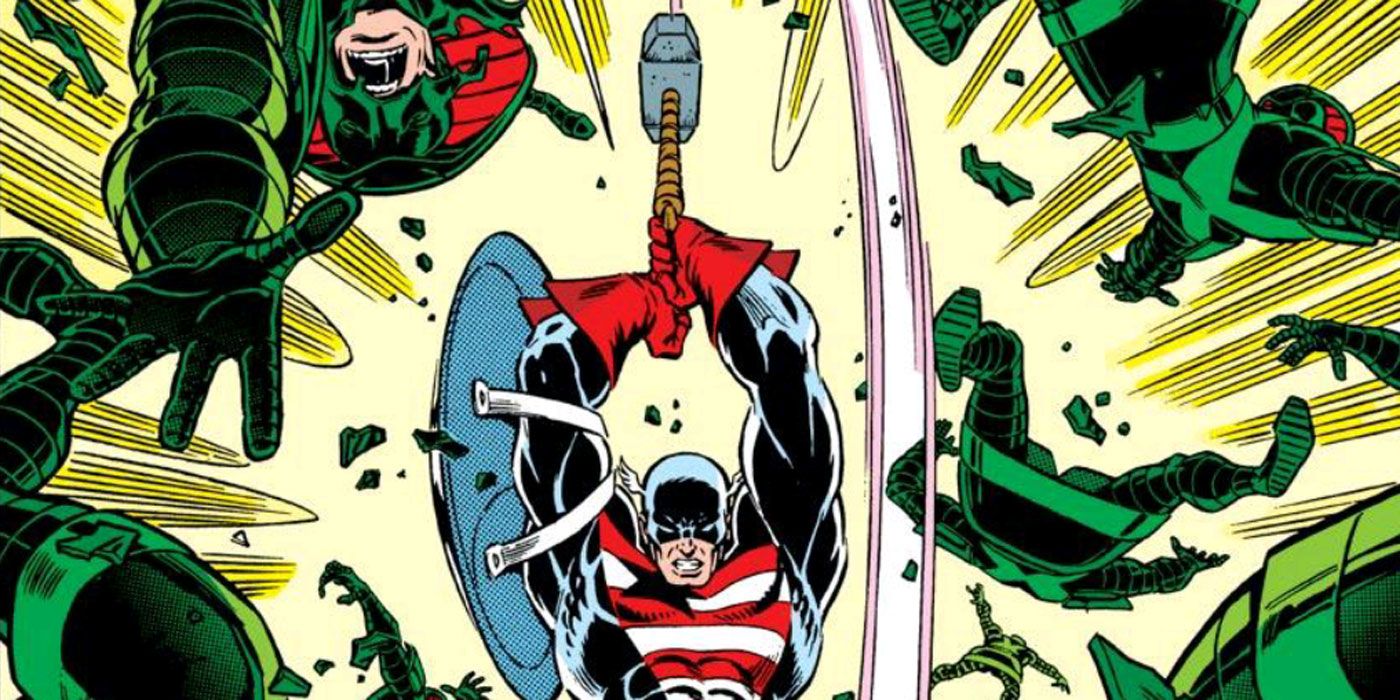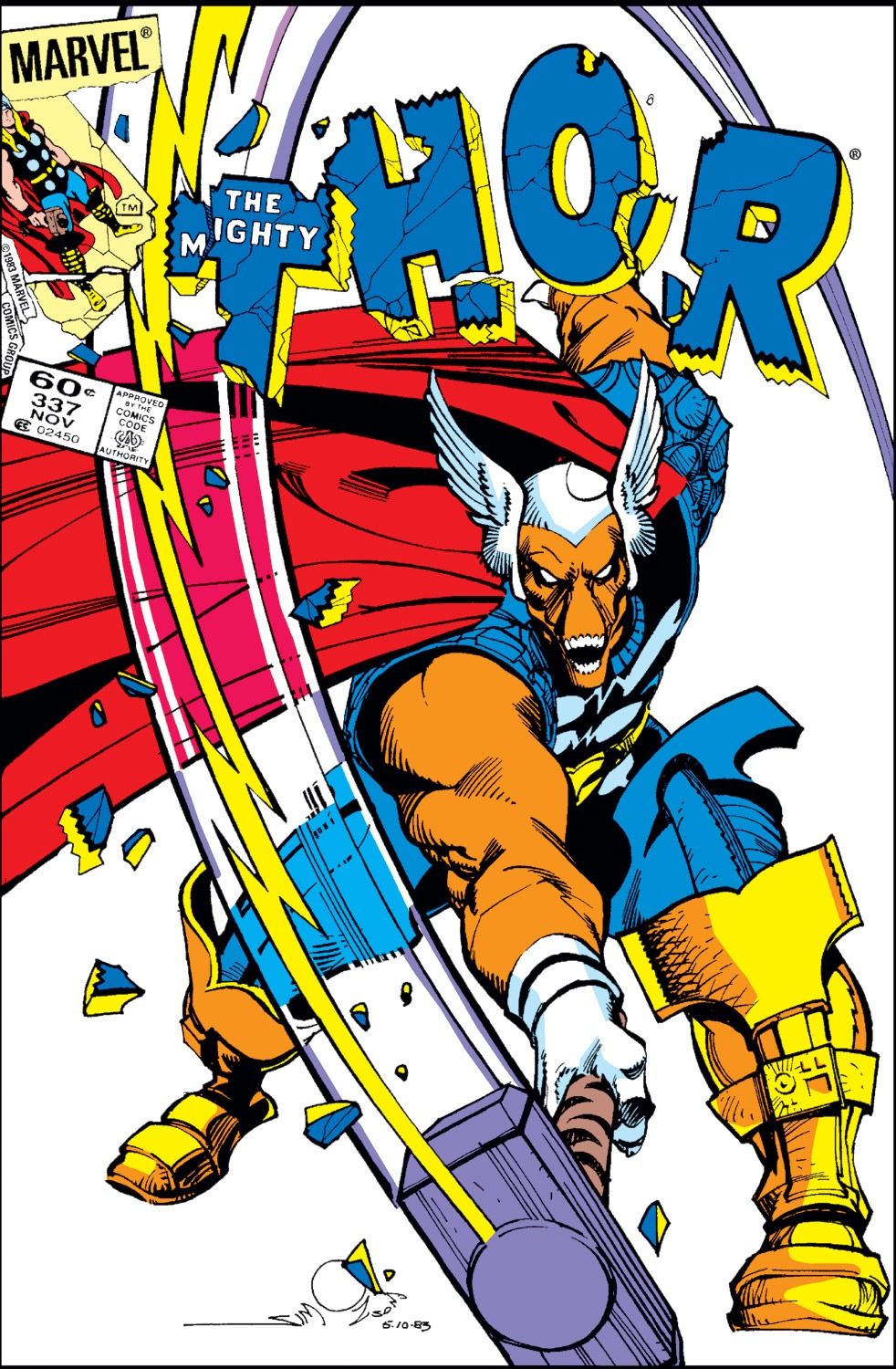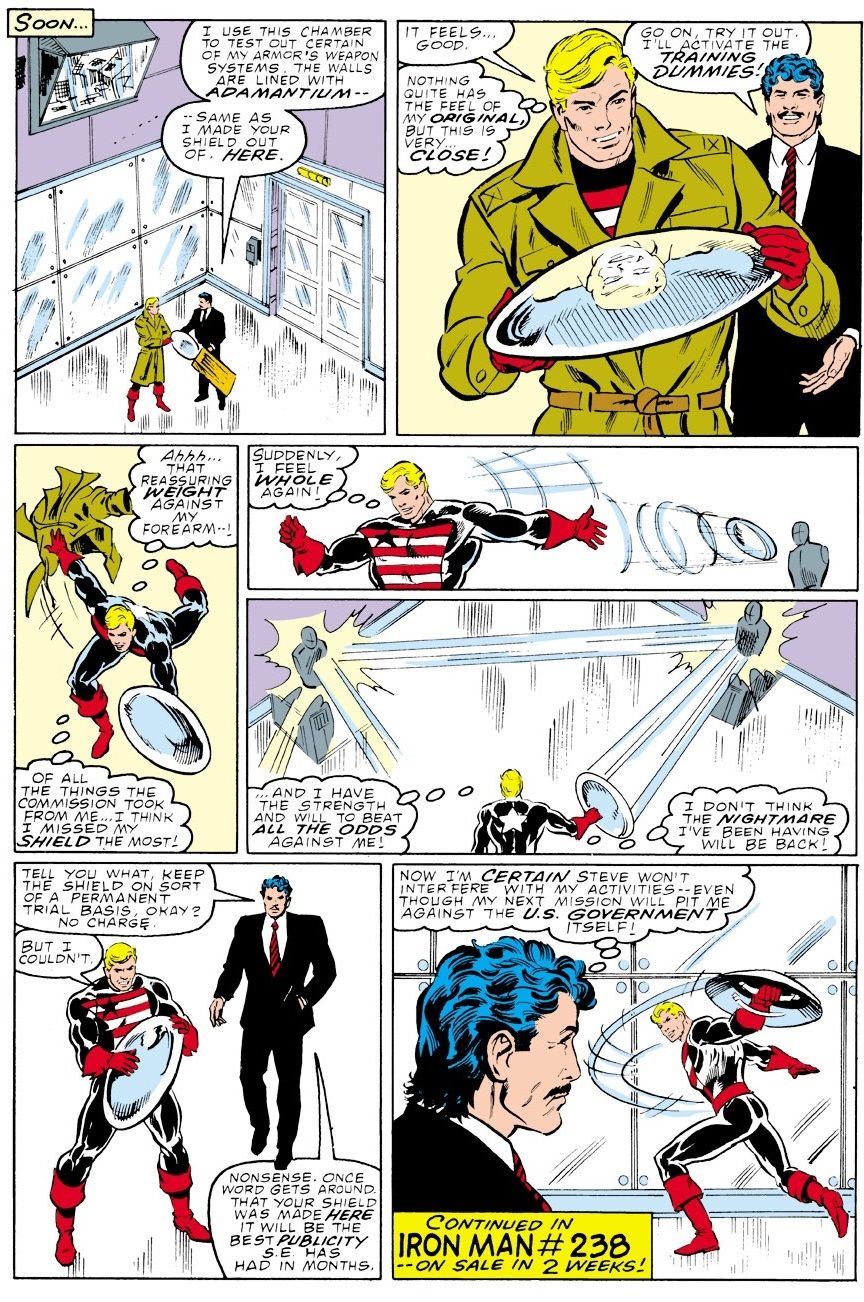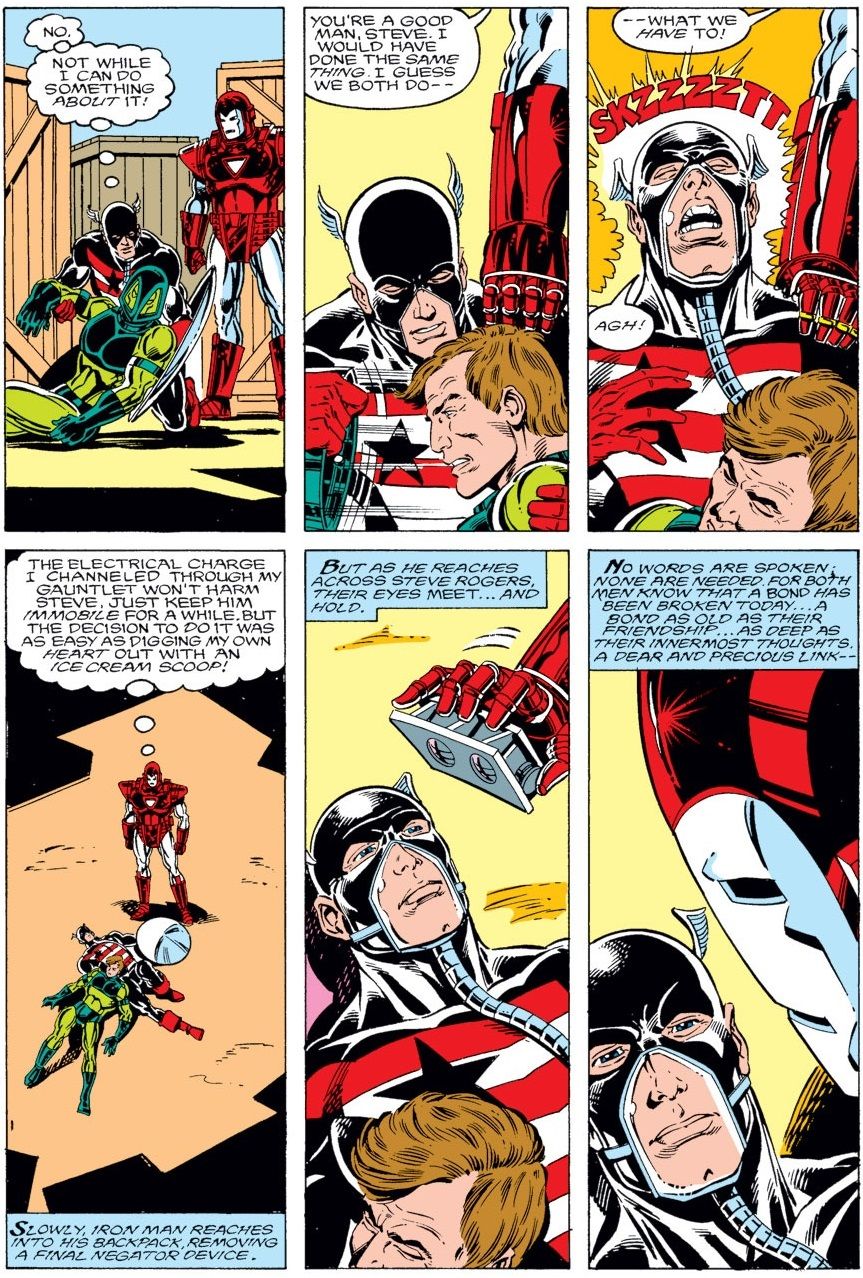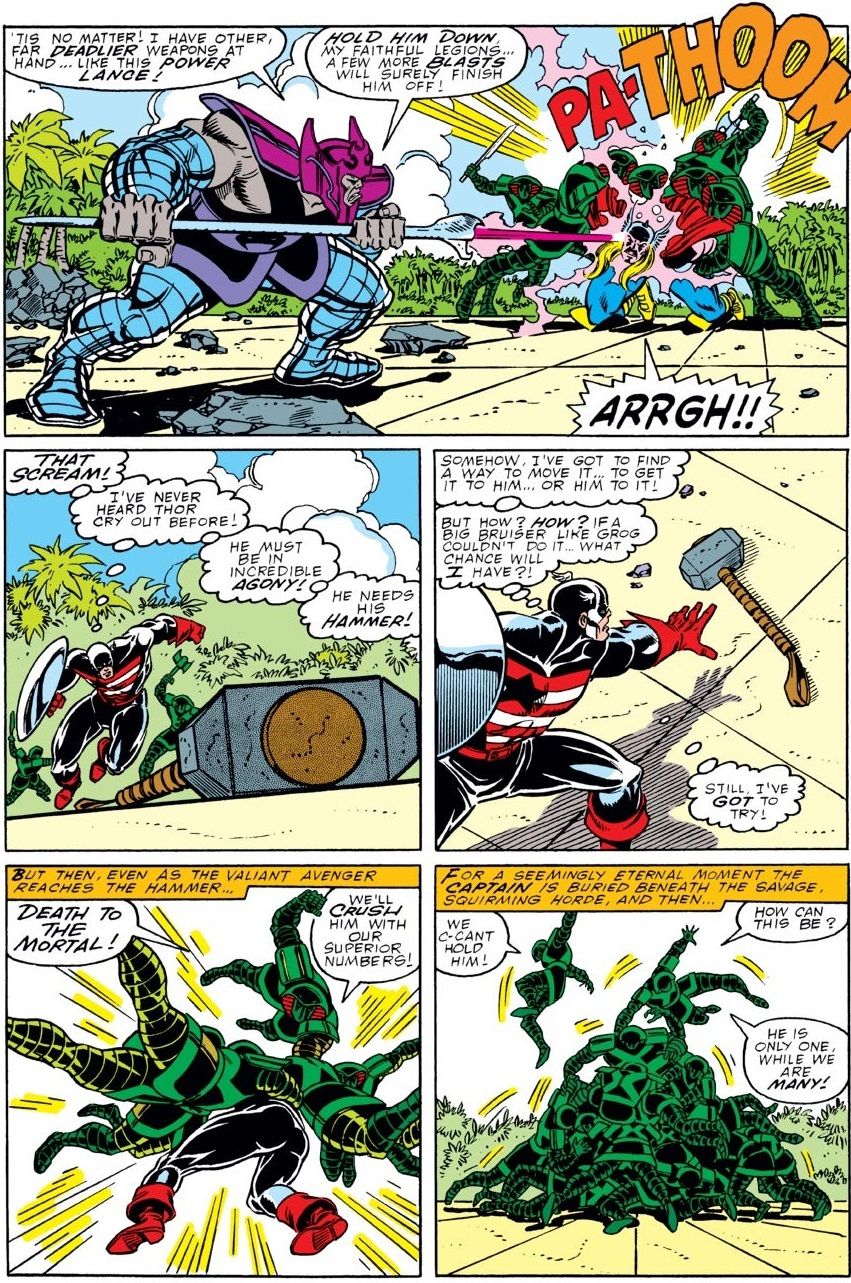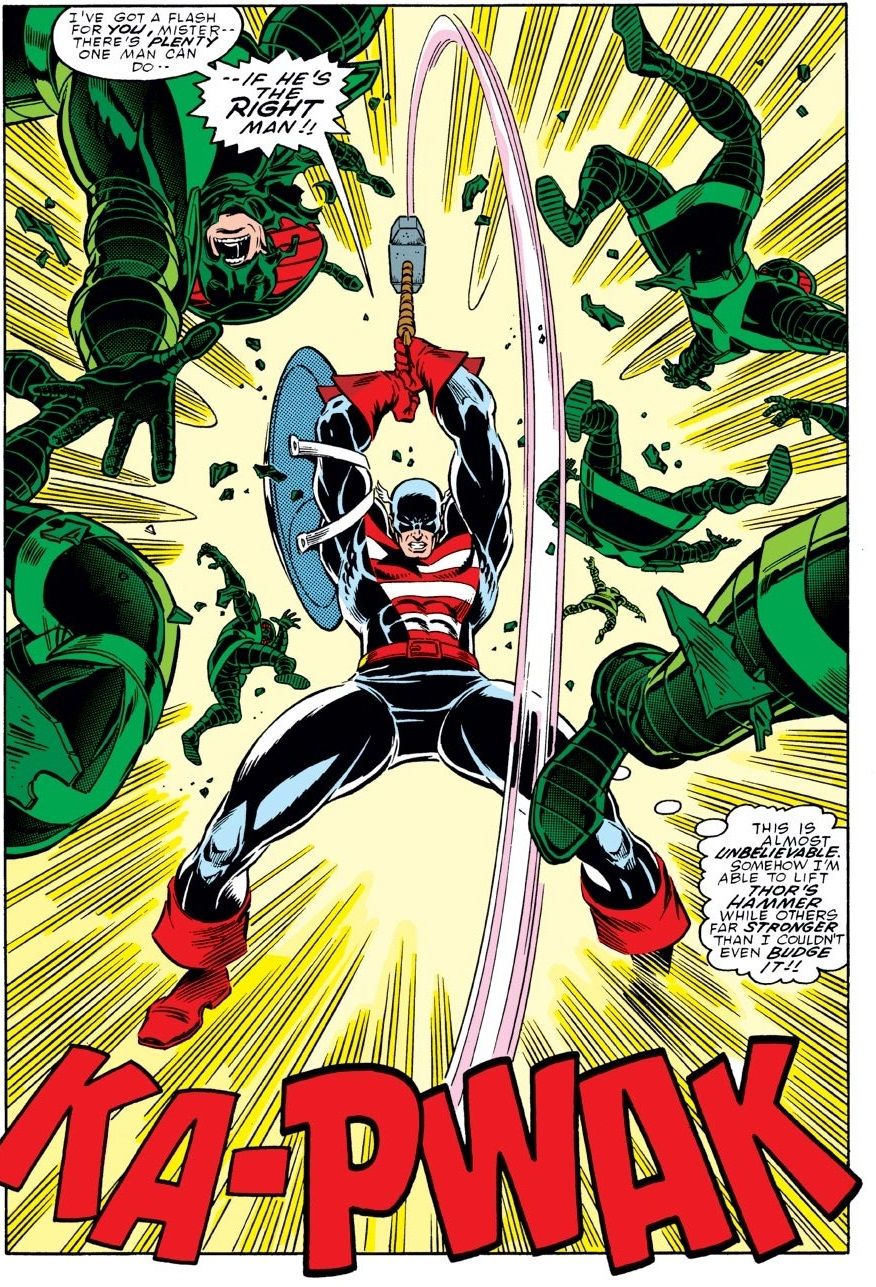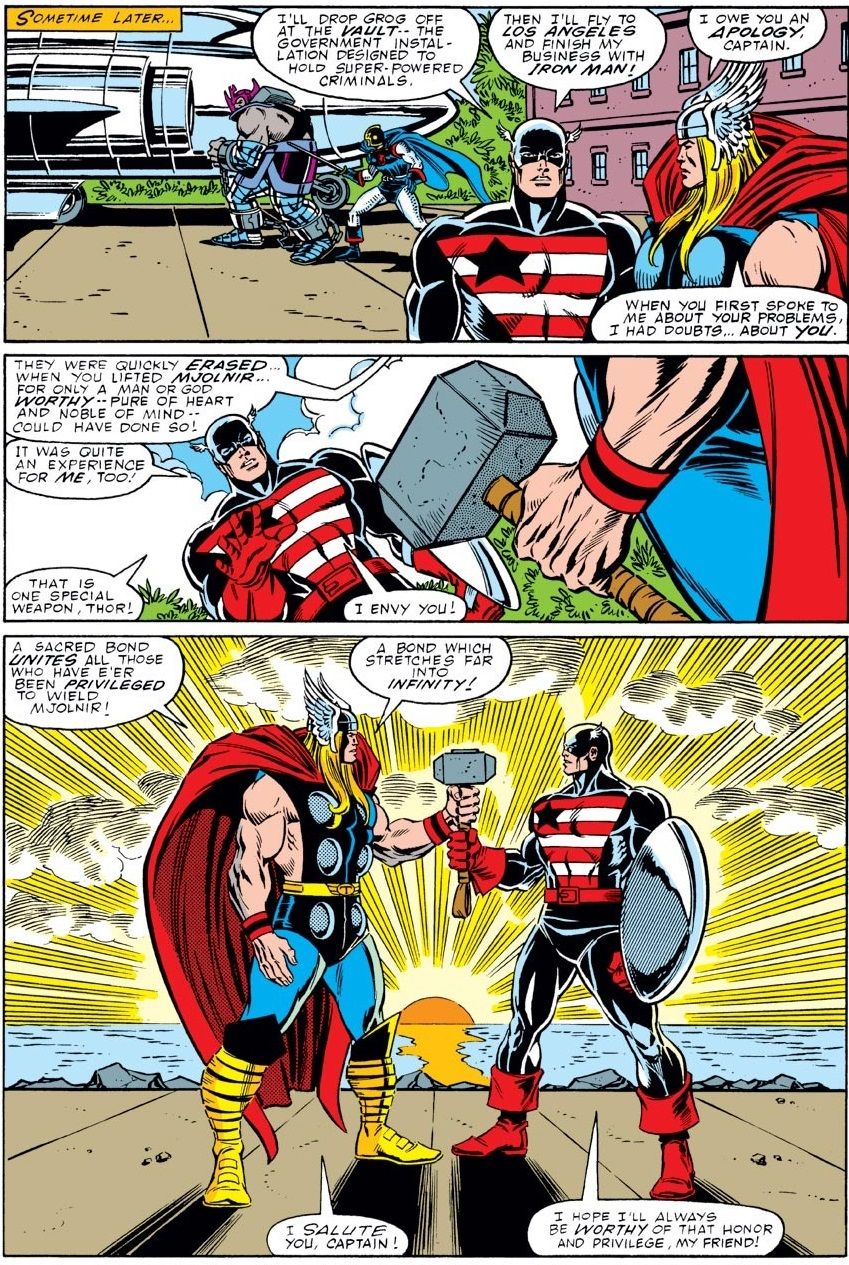In Avengers: Endgame, Captain America finally wielding Thor's hammer, Mjolnir, during the epic battle against Thanos was such an amazing moment that, a year later, people are still talking about it. It was one of the many different significant moments in the Marvel Cinematic Universe that was drawn directly from a famous scene from the comics: Captain America first lifted Mjolnir in 1988's Thor #390, by Tom DeFalco, Ron Frenz and Brett Breeding.
However famous the moment is today, it was actually significant for an entirely different reason in 1988, because it was not technically "Captain America" who performed the feat, but rather, "The Captain." It tied directly in a dramatic conflict between two fellow Avengers where Thor was suddenly caught in the middle of two of his closest superhero allies.
First off, it is worth mentioning that a fellow superhero lifting Mjolnir clearly was a big deal in 1988. The first superhero to nominally lift Thor's hammer was Iron Man, in Avengers #122 (by Steve Englehart, Bob Brown and Mike Esposito), but that was through the two major loopholes: You can lift it without being "worthy" if Thor is also holding onto it; and you can lift it in a situation where there is no gravity, such as in outer space (which is how Iron Man "lifted" it in Avengers #122).
Walter Simonson changed the game in 1983 when he had a brand-new hero, Beta Ray Bill, be deemed worthy of wielding Mjolnir. Once Simonson broke open the proverbial seal, then naturally another superhero would eventually get the chance, as well.
It was actually Brett Breeding, the inker on Thor in 1988, who came up with the idea of having a story where Captain America would be able to lift the hammer. So Captain America being "worthy" was certainly a notable event. However, the fact that he was worthy played into a major moment in the lives of Captain America, Iron Man and Thor.
For years, when it came to the friendships among the so-called "Big Three" of the Avengers (Captain America, Iron Man and Thor), it was the latter two who were the closest. They founded the Avengers together and they also left the team together in Avengers #16. More notably, in Avengers #113 (by Englehart, Brown and Frank Bolle), Thor and Iron Man discovered each other's secret identity. Captain America would not learn either's true identity for over a hundred issues (not until Avengers #216). Thor and Iron Man's friendship is not featured as much nowadays, but it was a significant one in the past. It was that friendship that led to Thor questioning Cap about a notable conflict that arose between Cap and Iron Man a few months before Thor #390.
It all started when Steve Rogers decided to give up the name "Captain America" because he was not willing to work for the Commission that had been put in charge of the Captain America name and the famous shield. So they eventually gave the title (and the shield) to John Walker, the hero who had been known as Super-Patriot when he fought Steve Rogers a few times. Ultimately, though, Steve Rogers couldn't just quit being a superhero simply because he wasn't working for the government any more, so he debuted a new costume that was a slight variation on his Captain America costume and began calling himself strictly "The Captain."
In Captain America #339 (by Mark Gruenwald, Kieron Dwyer and Tony DeZuniga), Tony Stark made Cap a new shield...
Tony Stark, meanwhile, was really angry after discovering that the Spymaster had sold Tony Stark's armor technology to the villainous businessman, Justin Hammer. Tony decided that he couldn't live with the idea of people possibly doing evil things with his technology. Since he knew he had no legal claim to stop the various people who had built his technology into their armors (as the technology had been sold to them through multiple different transactions), he just began to use "negator packs" to wipe out the Stark technology in the armors. People could rebuild their armors, of course, but they would no longer be using his technology to do so.
As you might imagine, eventually this led Tony into some fights with people who were NOT supervillains. In Iron Man #228 (by Bob Layton, David Michelinie and M.D. Bright), Iron Man and his friend, James Rhodes, broke into the Vault, the prison designed to hold supervillains in it, and they set out to negate the armor worn by the prison guards there, known as the Guardsmen.
When they sent out an alert of the prison being attacked, the Captain was in the area and he showed up to stop the attack, and he was shocked to learn that it was his friend, Iron Man, who was behind it! Iron Man had already taken down all but one Guardsmen, and the last armored guard's oxygen supply was running low due to Iron Man's earlier attack. Cap vowed to defend the Guardsman from Iron Man and told the guard to remove his helmet so that he could breathe. The guard refused to do, claiming that doing so would amount to abandoning his post. He then passed out and when Steve went to check on him, Iron Man zapped Cap from behind, incapacitating the hero, who gave his old friend a death stare as Iron Man negated the Guardsmen armors.
After he recovered, Cap tracked Iron Man down and returned the shield and tried to get Iron Man to surrender himself. That did not happen and the two heroes maintained an uneasy beef for a few years.
This led into Thor #390, where Thor reunited with the Avengers and Cap told Thor what had happened. Thor was conflicted. He obviously respected Cap, but Iron Man was one of his closest friends. Could it be possible that the government replaced him for a good reason? Was the man now calling himself The Captain no longer someone on which Thor could rely?
However, things clear up for Thor when he is attacked by minions of the evil God of Death, Set! Thor is separated from his hammer and Cap decides to try to get his friend his weapon and something special happens...
Cap delivered the hammer to Thor and the tide of the battle has shifted. Once it was over, Thor realized that he couldn't very well doubt Cap anymore after seeing him be worthy enough to wield Mjolnir...
In the years since, Thor has generally been closer to Cap than Iron Man in the comics and this story was a major turning point in that development.

